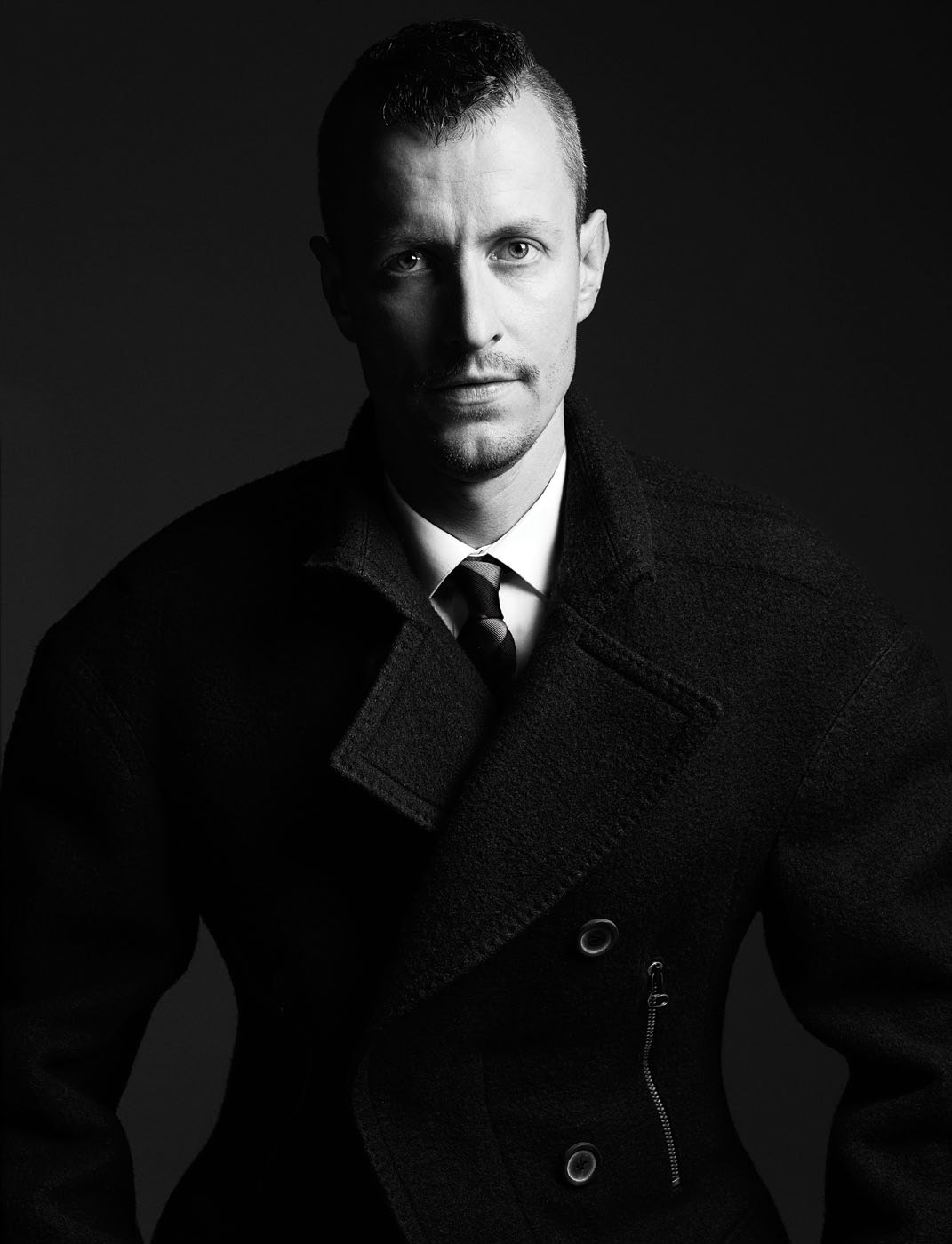Lucas Ossendrijver
You want to feel comfortable in Your garment. You want to be able to move… it’s a wardrobe—not a uniform.Lucas Ossendrijver
Lucas Ossendrijver‘s ascent to the heights of international menswear began as many success stories do—with a burning desire to get out of his hometown. “Basically, I lived on a farm,” the 42-year-old designer explains of his upbringing in the central Netherlands. “I desperately wanted to leave Holland and go to Paris.” That journey began in the early ’90s at Arnhem’s Institute of the Arts, where he joined forces with classmates Viktor Horsting and Rolf Snoeren (Viktor & Rolf) on a short-lived design collective called Le Cri Néerlandais. Then it took a career-defining turn when Ossendrijver landed a job at Paris-based clothier Kenzo in 1997.
If the Netherlands’ system of generous government subsidies had allowed Ossendrijver to not have to “bother too much about commercial viability,” his three years at Kenzo were a crash course in the business of fashion. But his biggest break came in 2001, when he signed on to assist Hedi Slimane during the designer’s mythical skinny-suited tenure at Dior Homme. “That was another kind of school,” Ossendrijver recalls. “Hedi taught me excision, which basically means rigor in everything, from tailoring to design—never being satisfied.” It’s an ethos Ossendrijver brought with him to Parisian luxury powerhouse Lanvin when he was tapped to revitalize the firm’s men’s collection in 2005. “Jeanne Lanvin [the house’s founder, in 1909] approached menswear as a wardrobe—something for every moment of the day,” he reflects. “We tried to modernize that idea. We didn’t want a ‘fashion collection.’ We wanted a wardrobe for men.”
The “we” of course refers to Lanvin creative director and womenswear designer, Alber Elbaz, with whom Ossendrijver openly and regularly collaborates. In the world of big-time fashion, that kind of cooperation is not a common occurrence. “Usually men’s and women’s are completely separate,” says Ossendrijver. “Here, every door is open. It’s a dialogue. I’ve learned a lot from Alber, and we help one another mutually.” Case in point: the ultraluxe, now iconic patent leather sneakers that Ossendrijver developed for the men’s line in 2006 have now become a staple in the women’s collection, too.
Ossendrijver’s clothes bristle against the notion that men should choose one look and stick to it. He’s purposely not a designer who can be summed up with a single cut or reference. “I am not a dictator,” he says. “We propose, and people choose.” Among the many choices in his Fall 2012 collection for Lanvin: sleek double-breasted cashmere overcoats with soft, round shoulders; cinched, peak-lapelled sport coats with a more severe, angular silhouette; sculptural knits coated in neoprene and injected with silicone; and high-waisted, flared pants that had many admirers referencing the 1970s. “But there’s not a time reference in them for me,” he says. “In menswear, things change so slowly. You can define an era by the size of the lapel and the shoulders. I like to play around with those codes, by changing them and combining them.”
To Ossendrijver, the Fall collection is “about tailoring, and how to make tailoring relevant.” It’s a word that has carried certain connotations since, well, Hedi Slimane-narrow, skinny, tight. “I want to get people out of that,” he smiles. “You want to feel comfortable in your garment. You want to be able to move. And I think it’s nice to play with volume. It’s a wardrobe—not a uniform.” This fall, that wardrobe will come to Madison Avenue, when Lanvin opens its first men’s flagship store in the U.S. It’s an opportunity for the wider world to see Ossendrijver’s vision. His life outside of fashion, however, is much more private and reserved. Ossendrijver, who lives in Paris’s 10th arrondissement, claims that he has no hobbies. He does confess a passion for electronic music (Jeff Mills, the pioneering Detroit DJ and producer, is a close friend), an aversion to electronic devices (“I find them disturbing, intrusive”), and, in a very un-Slimane-like twist, an interest in cooking. “Making a collection is like that: You add, you take out,” he says. “And I’m someone who always needs to be in the kitchen.”







